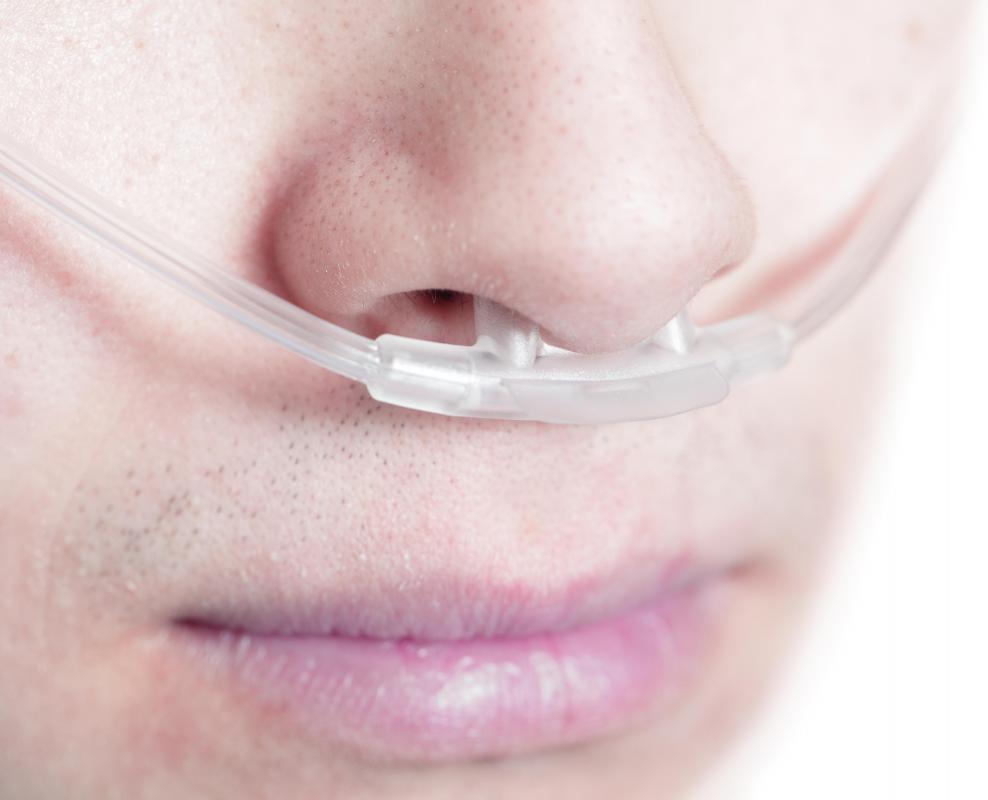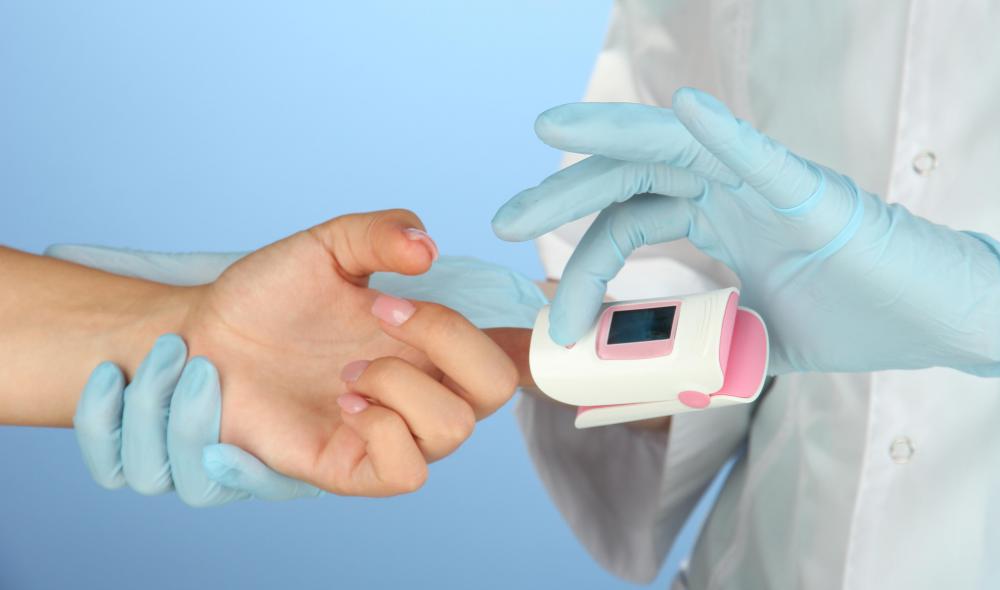At WiseGEEK, we're committed to delivering accurate, trustworthy information. Our expert-authored content is rigorously fact-checked and sourced from credible authorities. Discover how we uphold the highest standards in providing you with reliable knowledge.
What is a Nasal Cannula?
A nasal cannula is a clear plastic tube used as medical equipment to deliver low concentrations of oxygen via two prongs that rest in the nostrils of the patient. It is employed in pre-hospital care rendered by emergency medical technicians (EMTs) and paramedics as well as in the hospital by nurses, physician assistants and other healthcare providers for patients who have been admitted. Some people who are on oxygen therapy use a nasal cannula in their home.
The nasal cannula has a connector for oxygen delivery at the opposite end of the prongs. This device is held to a patient's face by positioning the tubing over both of the patient's ears and then gently tightening the slip-loop under his or her chin. Low concentrations of medical-grade oxygen flows through the two prongs resting in the nostrils.

When a healthcare provider uses a nasal cannula, he or she delivers no more than six liters of the drug per minute. Higher rates become very uncomfortable for patients who might feel as if a wind storm is occurring in their nostrils. Improper use of a nasal cannula can lead to irritation if the mucous membranes of the nasal cavity are exposed to high concentrations of oxygen long enough to dry them out. It might be said that the delivery of oxygen via a nasal cannula is a form of respiratory therapy.

There are many reasons why a person might need oxygen therapy, including the experience of chest pains such as those felt during a heart attack, signs of shock or hypoxia. Hypoxia is an insufficiency of oxygen in the tissues of the body, which can be caused by various medical problems and by trauma. Although such patients benefit best from the delivery of oxygen through what is known as a nonrebreather mask, these devices cannot always be successfully used.

When patients are experiencing even slight difficulty breathing or are in discomfort, they generally do not tolerate having their face covered by a mask. Delivery of needed oxygen via a nasal cannula is almost always the preferred alternative. These devices are frequently used to treat pediatric patients with oxygen therapy. Most people who have received emergency medical services in the pre-hospital setting or who have been an in-patient in a medical facility have been given oxygen therapy via a nasal cannula.
AS FEATURED ON:
AS FEATURED ON:


















Discuss this Article
Post your comments